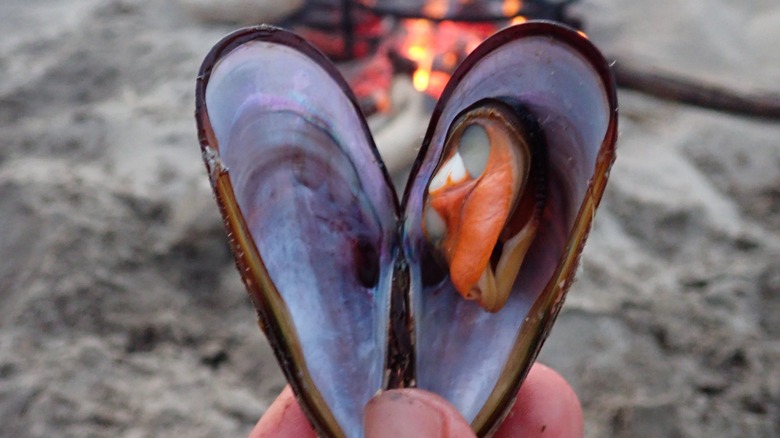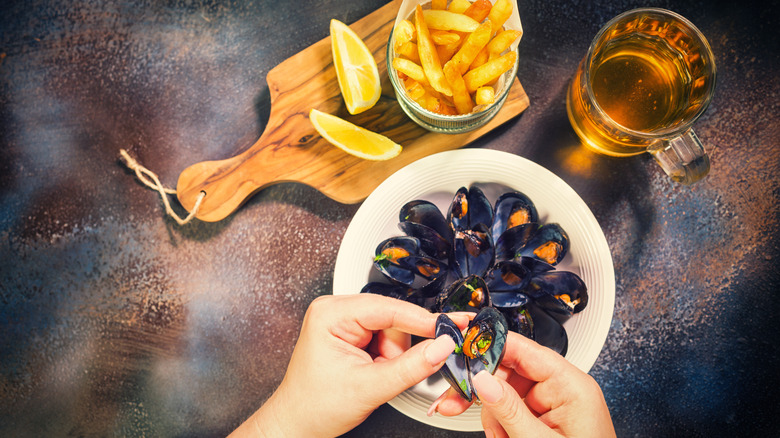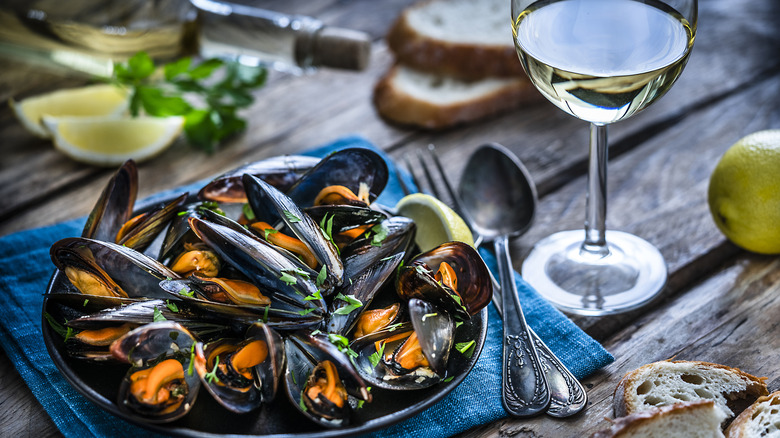The Quick And Easy Way To Clean Mussels Before Cooking
Within the mollusk category of shellfish, we have oysters, squid, and mussels, and people associate them with different things. Oysters are known for having (supposed) aphrodisiac properties, squid is strangely popular in pop culture, from krakens to show titles (e.g., Squid Games), but the underrated mussels are mostly a source of pun-ridden headlines.
This is a shame because mussels (not to be confused with clams) have a distinctive flavor often described as fresh, briny, and slightly sweet. They can absorb the flavors of the broth or sauce in which they're cooked, making them versatile and relatively easy to cook.
While it is possible to buy frozen or smoked shelled mussels, the fresher the shellfish, the better it tastes. However, there are a few steps to properly clean the mussels to get rid of the sand, debris as well as the fibrous clump of hair known as the beard so they do not affect the taste of the food. These steps include a few rounds of soaking, rinsing, scrubbing the mussels, and removing the beard, which is the tricky bit.
A firm tug can de-beard a mussel
Start by inspecting the mussels and ditch those with cracked or broken shells and those that are open or do not close when tapped. These could be dead and potentially unsafe to eat. Then, soak the mussels in fresh water so that they expel all the grit and debris in the shell back into the water as they breathe.
Next, remove the beard, which extends from the shell. Hold the mussel in one hand and grip the beard between your thumb and forefinger with the other. Give it a firm, confident tug toward the hinge of the shell. If the beard doesn't easily come off, use a paring knife to cut it off gently. If done correctly, the mussel will still be alive at this stage. You can tear and kill the mussel if you accidentally yank the beard toward the opening end. This is not a dealbreaker, but you do not want stray mussels to be dead or rotten before you can cook them.
Rinse the mussels a few times before cooking
Many guides state that after de-bearding, you need to transfer the mussels to another water bowl and refresh the water a few times. This can translate to using a colander to drain the water, which is faster and simpler, or transferring the mussels individually to a separate bowl.
There is a case to be made for not using a colander because the sand and debris in the water will get dumped back on the top of the mussels' shells, making the first few steps pointless. If you have no desire to hand transfer a few pounds of mussels, scrub the shells to remove any impurities. This might seem like an overkill because the edible part of the mussel is the meat inside, but mussels are cooked with the shells intact, so it is a good way to ensure the dish is entirely dirt-free.
One of the best ways to cook mussels is to steam them in white wine. It only takes 10-15 minutes to cook, and the sauce is flavorful, aromatic, and perfectly pairs with crusty bread.


